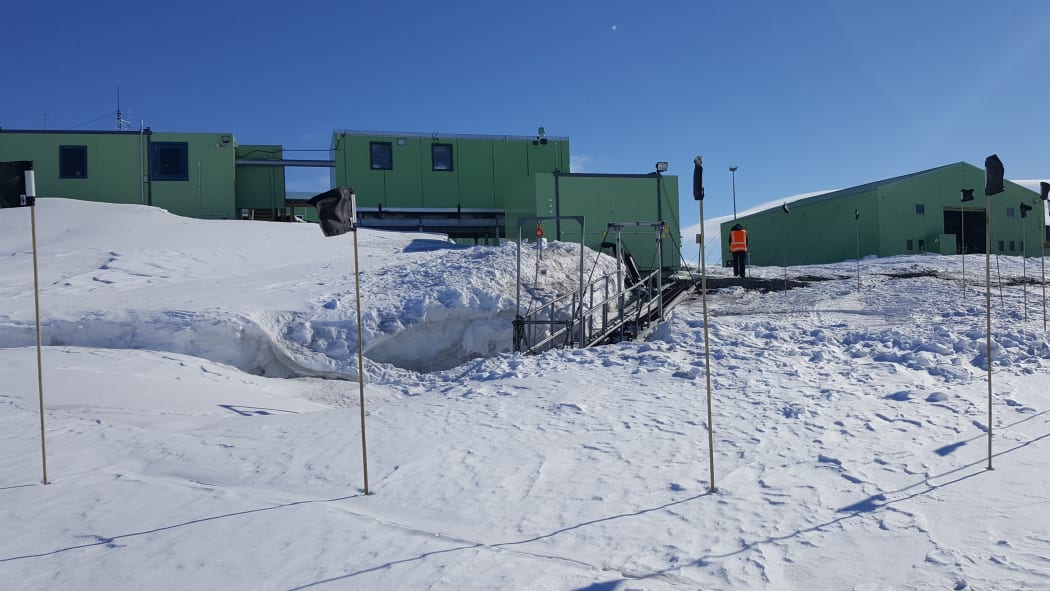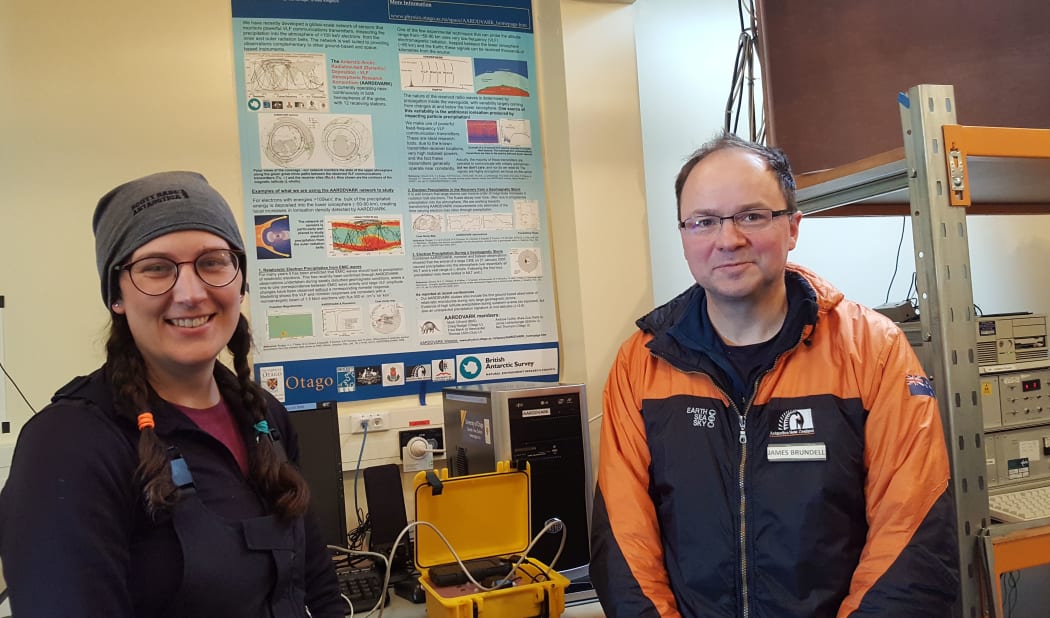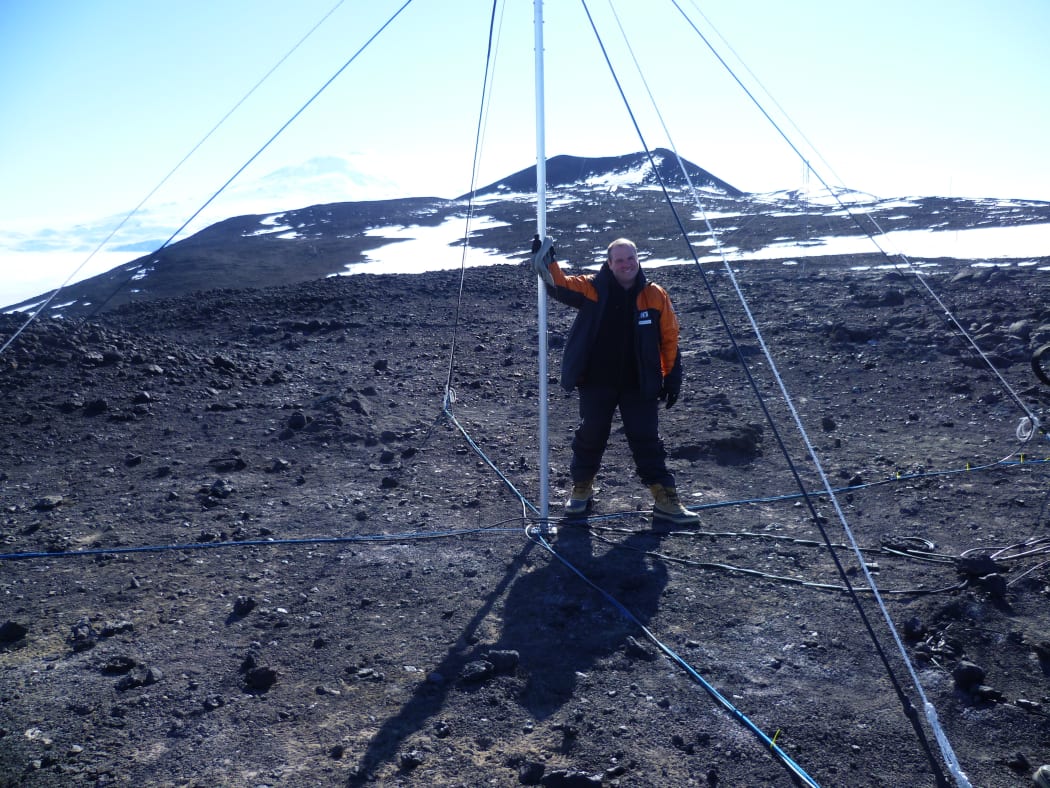Small coloured flags fluttering atop bamboo poles are a familiar sight in Antarctica, marking safe routes for travel on the sea ice, where cracks and thin ice can pose a danger.
The way they flutter is a good unofficial barometer for how strong the wind is, but the official Ross Island weather designation varies from Condition 3 – normal conditions – up to Condition 1 – when temperatures are so low and wind so strong that people are confined to base.

Small flags mark the safe route to walk during a white-out on the sea ice in front of Scott base, Antarctica. Photo: RNZ / Alison Ballance
Find Our Changing World on Apple Podcasts, Spotify, Stitcher, iHeartRADIO, Google Podcasts, RadioPublic or wherever you listen to your podcasts

Black flags mark no-go areas on the shoreline in front of Scott Base, where the sea ice butts up against the land. Photo: RNZ / Alison Ballance
In the Antarctica Specially Protected Area at Arrival Heights, located between Scott Base and McMurdo Station, physicists from the University of Otago maintain a VLF (Very Low Frequency) radar to eavesdrop on communication signals sent to submarines.
These VLF signals travel for thousands of kilometres and bounce off the ionosphere, and Antarctica is a great place to detect them. The physicists use the signals to study sun flare activity.

Physicist James Brundell from the University of Otago, with Masters student Emily Gordon. They are standing next to the computer at the Arrival Heights laboratory that collects the Very Long Frequency data they are interested in. Photo: RNZ / Alison Ballance
Lightning strikes are also detectable in the very low frequency range, and the University of Otago Space Physics Group also maintains a lightning detector at Scott Base that is part of a global lightning detection network.

Physicist Craig Rodger standing next to the VLF radar aerial at Arrival Heights, which studies the sun by eavesdropping on messages sent to submarines (photo taken in 2010) Photo: RNZ / Alison Ballance
Voices from Antarctica – listen to the full series
Voices from Antarctica 1: Ice Flight
Voices from Antarctica 2: Scott Base
Voices from Antarctica 3: Flags to physics
Voices from Antarctica 4: Best journey in the world
Voices from Antarctica 5: Waiting for Emperors
Voices from Antarctica 6: Seal songs
Voices from Antarctica 7: What the ice is saying
Voices from Antarctica 8: Under the ice
Our Changing World’s Antarctic collection
Listen to a wide range of stories recorded in and about Antarctica from our archives.


